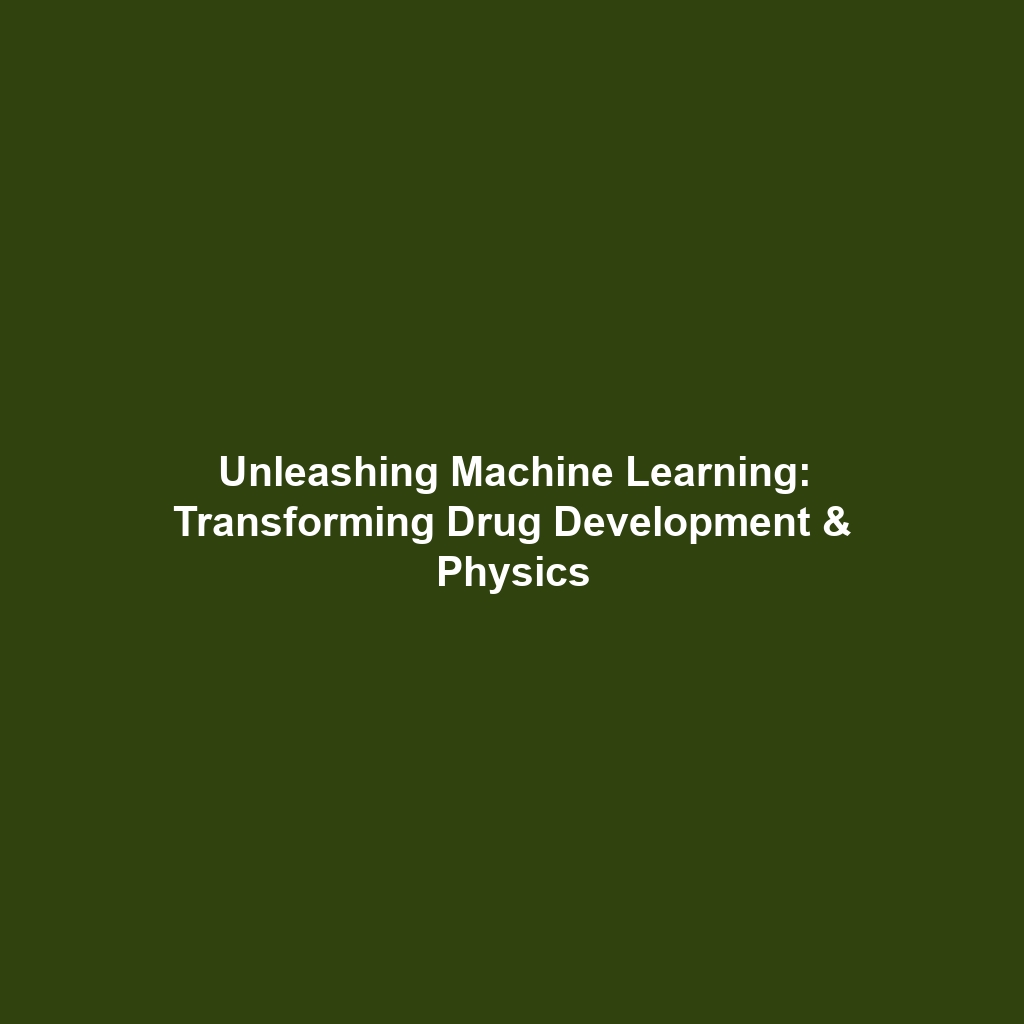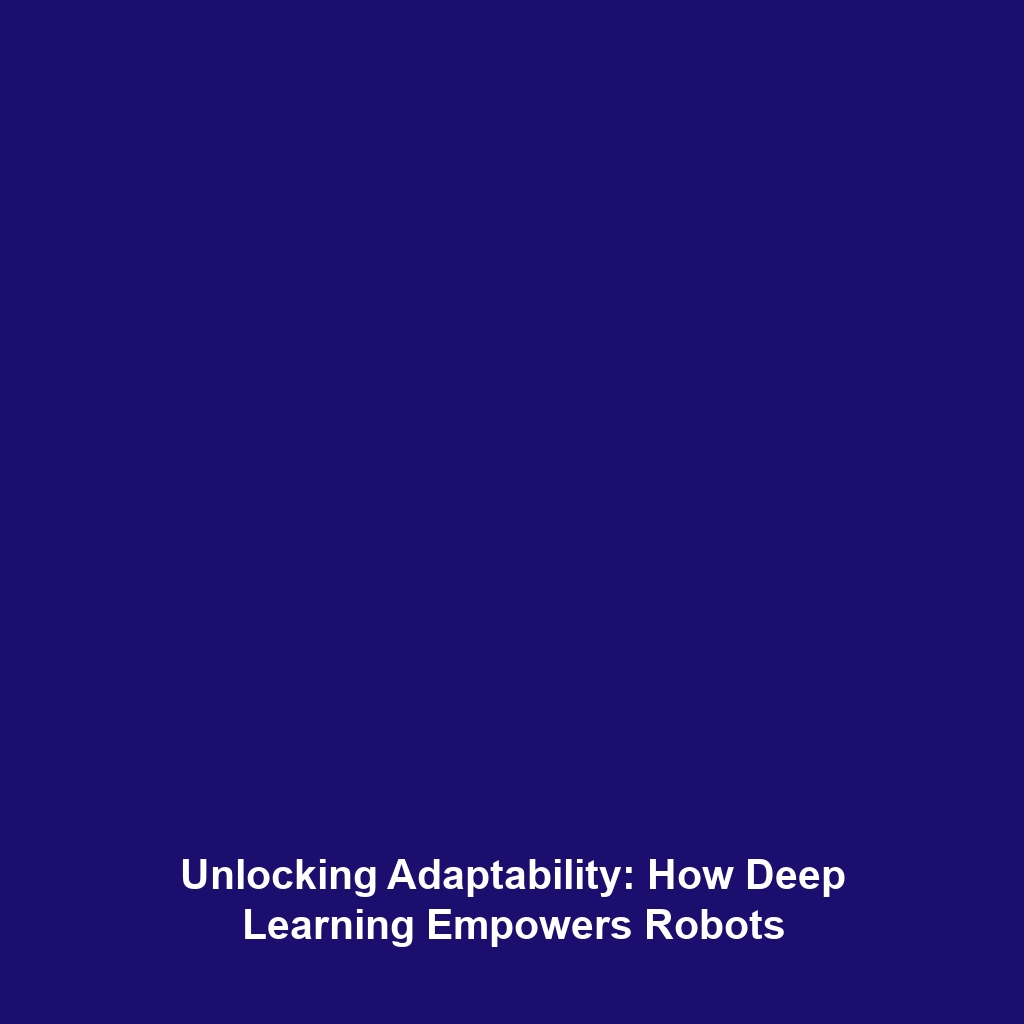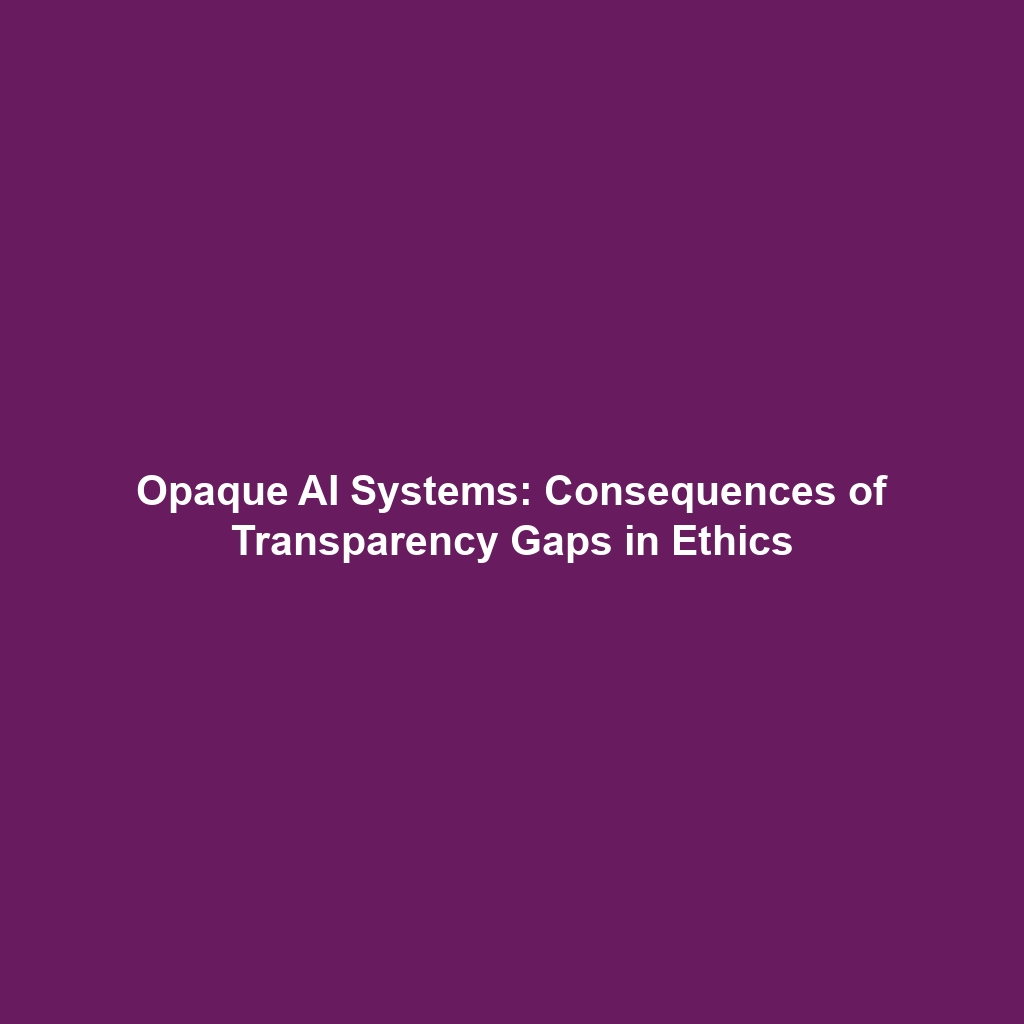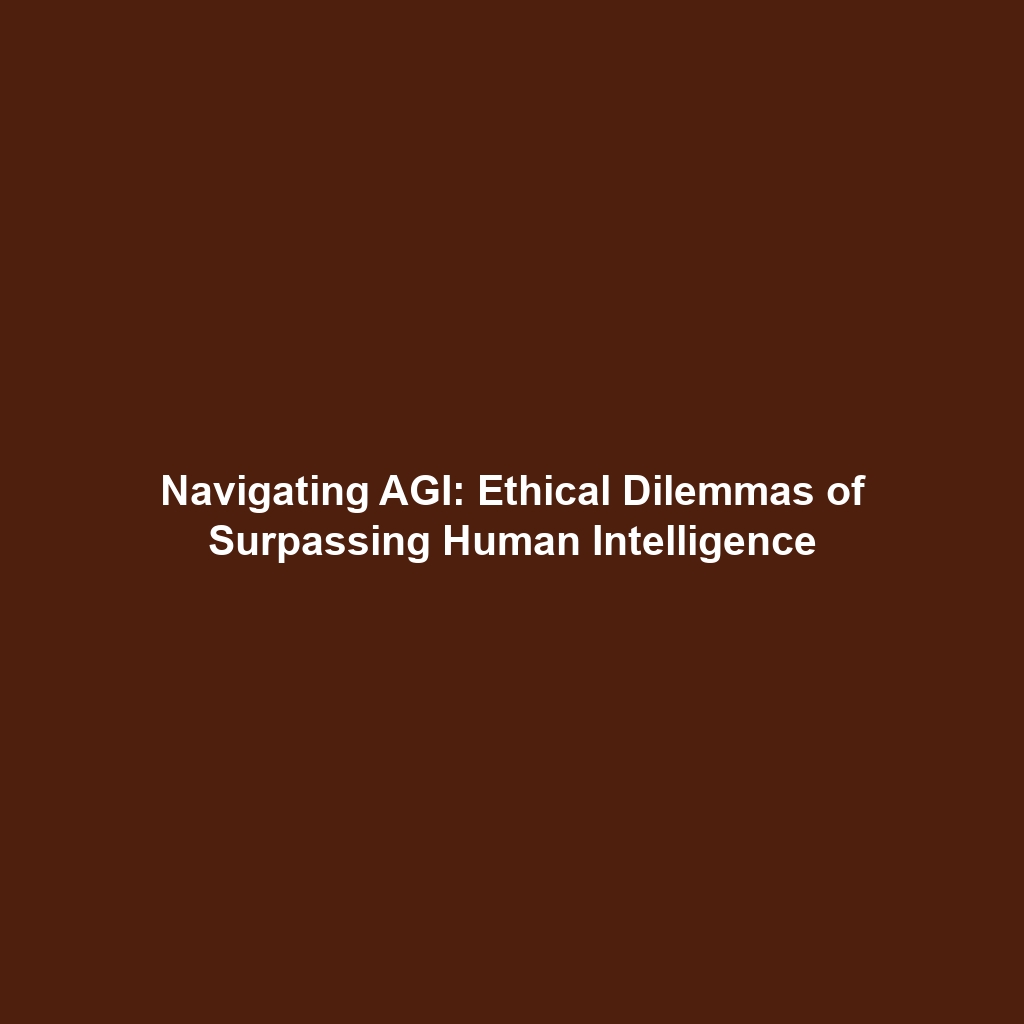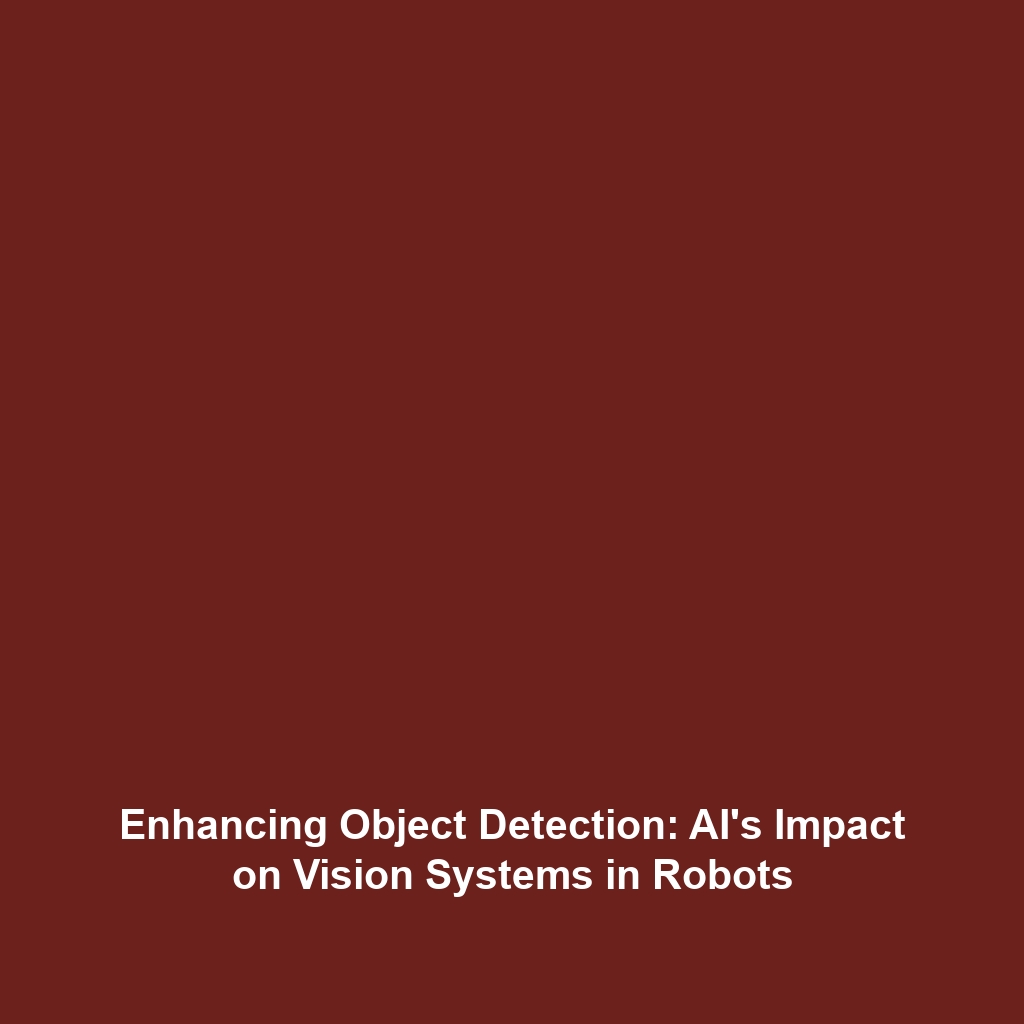Regulations and Guidelines for Transparency: Global Efforts to Enforce AI Transparency
Introduction
In recent years, the surge of artificial intelligence (AI) technologies has raised critical ethical concerns regarding their implementation and governance. Regulations and guidelines for transparency in AI are emerging as pivotal components within the broader context of AI Ethics. This discourse is vital, as transparency fosters trust and accountability, ensuring that AI systems operate in a manner that aligns with societal values. This article examines the global efforts to enforce transparency in AI, emphasizing the pressing need for coherent regulations and guidelines that address ethical issues and promote responsible innovation.
Key Concepts
Understanding Transparency in AI
Transparency in AI refers to the clarity with which AI systems operate and the processes by which they make decisions. Essential principles include:
- Explainability: The ability to understand and interpret AI decision-making processes.
- Accountability: Establishing responsibility for AI outcomes.
- Fairness: Ensuring that AI systems do not perpetuate biases.
These concepts are intertwined with AI Ethics, creating an essential framework for guiding the development and deployment of AI technologies.
Applications and Real-World Uses
Regulations and guidelines for transparency have broad applications across various sectors. Some significant examples include:
- Healthcare: AI systems assist in diagnosing diseases; transparency allows for review of the algorithms’ decision-making processes.
- Finance: Algorithms used in credit scoring must be transparent to avoid discrimination.
- Autonomous Vehicles: Transparency in AI algorithms helps ensure safety and regulatory compliance.
These applications demonstrate how transparency directly enhances ethical practices in AI, leading to better outcomes for society.
Current Challenges
Despite the importance of transparency, several challenges remain in implementing regulations and guidelines:
- Complexity: AI systems can be highly complex, making it difficult to achieve full transparency.
- Standardization: The lack of standardized definitions and frameworks for transparency complicates enforcement.
- Privacy Concerns: Balancing transparency with individual privacy rights poses significant dilemmas.
Future Research and Innovations
Looking forward, research on new models and frameworks for transparency is rapidly evolving. Innovations in explainable AI (XAI) are enhancing our ability to understand complex algorithms. Additionally, the development of regulatory technologies (RegTech) promises to streamline compliance with transparency regulations. These advancements will be critical in shaping the future of AI ethics, ensuring that transparency remains a foundational element in AI development.
Conclusion
In conclusion, regulations and guidelines for transparency represent a crucial aspect of AI Ethics that seeks to foster accountability, trust, and fairness in AI applications. As global efforts to enforce these standards continue to evolve, it is essential for stakeholders—developers, policymakers, and society at large—to engage actively in this discourse. For further reading on related topics, check out our articles on AI Bias and Ethical AI Practices.

